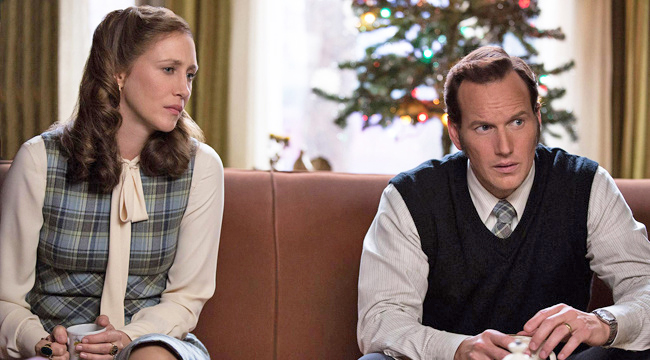
You gotta hand it to James Wan. Who would have thought that the director of a gruesomely over-the-top film like Saw would not only spawn too many Jigsaw-centered sequels but eventually helm a comic-book movie (the upcoming Aquaman) for Warner Bros. after successfully weaving an entire horror universe for the same studio? That latter feat launched only five years ago with 2013’s The Conjuring, and five films later, audiences are hooked. To date, the universe has captured over $542 million domestically and $1,563 billion worldwide, and there’s plenty more on the way. Here’s how the movies stack up in dollars:
The Conjuring: $137,400,141 (Global: $319,494,638)
The Nun: $116,269,449 (Global: $359,569,449)
The Conjuring 2: $102,470,008 (Global: $320,392,818)
Annabelle: Creation $102,092,201 (Global: $306,515,884)
Annabelle: $84,273,813 (Global: $257,047,661)
Two fresh installments, The Conjuring 3 and an unnamed third Annabelle movie, are in the works, with the latter described by Wan as “basically a night at the museum” with many of the artifacts that source from the home museum of Ed and Lorraine Warren, the real-life paranormal-investigative figureheads who anchor this universe and are embodied by Patrick Wilson and Vera Farmiga. She’s a clairvoyant; he’s a demonologist of the Catholic church; and they’re both relatively fearless while the actors deliver understated performances. Yet although they haven’t appeared in every franchise film, their presence largely looms throughout the universe.
How do these films compare in terms of quality, though? We took a stab at ranking them, and here’s how they measured up.
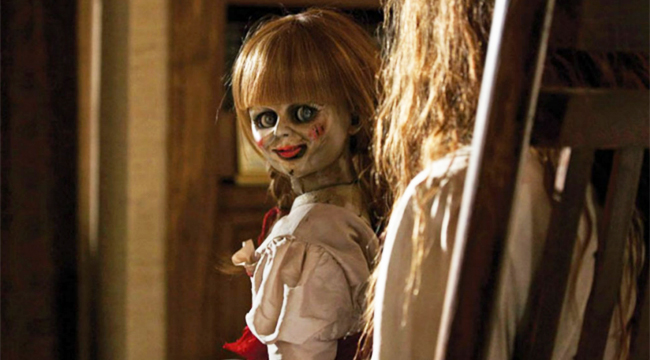
5. Annabelle (2014)
This spinoff aimed to expand the tale of the doll (used by a demon as a conduit) that now sits in the Warrens’ museum of cursed artifacts. The mere appearance of the toy presented an intimidating and nightmarish take on Raggedy Ann, so a spinoff must have been irresistible, given that this doll — bolstered by telltale red crayons rolling across hardwood floors, terrifying scrawlings on walls and ceilings, and those horrific knocks at the door — was one of the most notable supporting aspects of The Conjuring. Yet once this inanimate object was held responsible for carrying an entire narrative, it quickly became apparent that Wan’s initial universe entry had cleverly pulled off some atmospheric wizardry with this toy, and these shenanigans couldn’t translate through a less forgiving structure than the original film’s full-on house of horrors.
Sadly, this spinoff also aimed for Hitchcockian vibes, but it takes much more than an icy cold blonde lead character and stairways aplenty to ascend to such heights. The script further fails to generate any empathy for the couple being “terrorized” by mysteriously rocking chairs and errant popcorn batches, and although the Satanic, Manson-esque cult members scored some thrilling moments, those characters only appeared briefly at the beginning. From there on out, audiences were stuck with a centerpiece whose scariest feat was “peering” through the crack underneath a doorway. Woof.
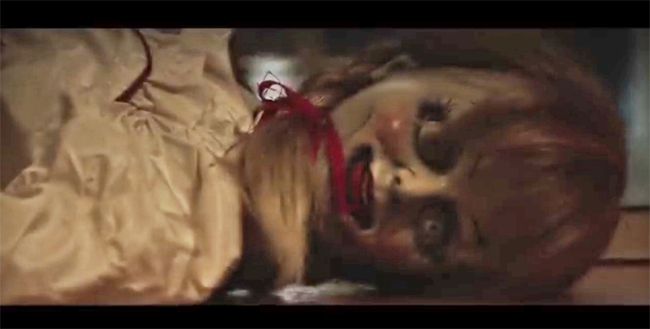
At least Annabelle kept viewers primed for a direct The Conjuring sequel.
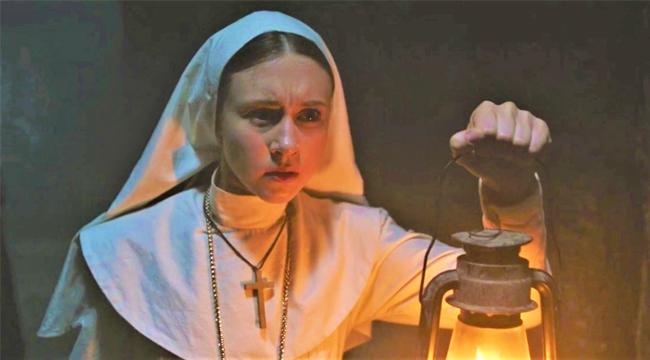
4. The Nun (2018)
Anticipation ran high for this spinoff, which followed The Conjuring 2 but takes place decades prior, back in 1952, yet the end product didn’t quite achieve pants-wetting status. In the film, the Vatican sends a priest and a young nun-in-training (who was “gifted” with visions) to investigate a tragic suicide at an abbey that happened to sit atop a sealed gateway to Hell. Once on site, the demon Valak (who’s supposedly a major badass as far as actual demon lore is concerned) commences manipulations, and all is definitely not what it seems. Unfortunately and although the film does produce effective jump scares, other elements of the unintentionally cartoonish production produce too many laughs for this film to be taken seriously. Worst of all, The Nun justifies its entire existence by leaning into an anti-war bender as an expository mechanism, which is the universe’s most obvious (and groan-inducing) effort to get political. This is a misguided move in 2018, when U.S. audiences are already besieged with political messaging and, more than ever, desire to escape reality-based conflict. In short, The Nun was a missed opportunity to deliver a straight-up horror flick that could have relied more upon cemetery-based frights, maybe with better Evil Dead send-ups, rather than what materialized after Wan sowed the seeds of the titular hellspawn in The Conjuring 2.
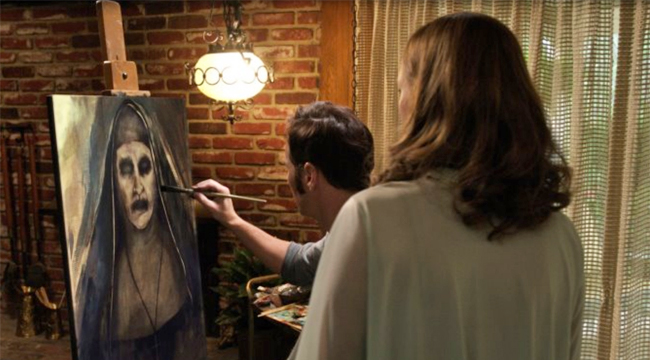
3. The Conjuring 2 (2016)
The Warrens followed up their debut turn by turning up to help the family being traumatized by the Enfield Poltergeist, an actual case in which the paranormal investigative pair briefly dug into (not to the extent portrayed in the film), and which may or may not have been a hoax. The film greatly exaggerated the facts of the case to chilling effect, like adding a room full of spinning crosses and a child pinned to a ceiling, rather than reports of slight levitation (which may have been faked) along with strange noises and furniture that allegedly moved on its own. As a highly shambolic production, The Conjuring 2 also relies much more on cheap scares than its predecessor, but it scored major points through a last-minute rendition of the “Nun” figure as the embodiment of the demon Valak. Valak was actually never mentioned during the actual Enfield case, but the non-demon first surfaced in the film as the subject of a painting by Ed Warren in the film. Soon enough, the apparition stepped out of the painting and began stalking Lorraine, which is the best scene of this sequel and one that nicely set up the universe for Valak to continue with its own hellish spinoff.
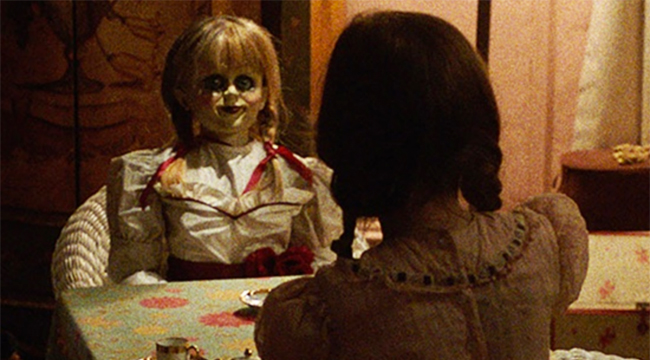
2. Annabelle Creation (2017)
This surprisingly effective Annabelle prequel redeemed this damned doll and delivered a spinoff that was almost as solid as the universe’s main arcs. In doing so, the film filled in plenty of gaps about the origin of the demonic presence haunting the toy, while infusing undead vibes into the creation of a dollmaker who’s still struggling to cope with his daughter’s violent death. After a nun and a group of orphans move into his home, reality bends, and this prequel uses numerous unseen devices, levitating forces, and a black inky cloud to signal the demon’s presence in a much more effective way than a doll that, you know, only sits there. The lead up to the climactic scenes, especially, will scare the bejesus out of viewers while the dead girl’s parents reveal how they were tricked by the demon that has infused the doll with “the devil itself.” Crazy, bone-twisting moments match up to some of the better exorcism movies out there (one scene, in particular, is highly reminiscent of 2005’s Constantine), and effective performances by the young girls go much further than icy personas that litter the first Annabelle. Of course, the final moments actually end up doing this prequel a disservice by seamlessly leading into the film to come, but that’s a minor detraction from the whole.
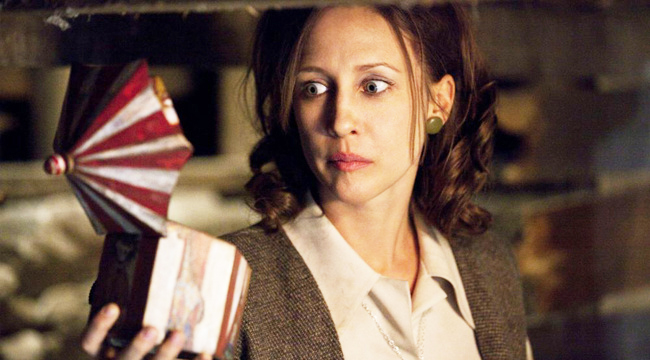
1. The Conjuring (2013)
The kickoff of this universe still qualifies as its most accomplished installment. Five years ago, James Wan unleashed his version of one of Ed and Lorraine Warren’s case files about the Harrisville (pre-Amityville) happenings, and this film relied upon the director’s mastery of creating a chilling atmosphere and exercising much restraint. Hardly any gore surfaces in this film, which may run a little long (at 110 minutes) for a horror flick but uses every moment to build suspense and make the audience squirm throughout extensive breath-holding instances. The tiniest of touches — frozen clocks, odd smells, freezing bursts of air, and mystery bruises — go so much further than any CGI effects seen in other contemporary horror films.
The best part of this film, however, would be those introductory turns by Wilson as the capable Ed, and Farmiga, who never lifts a finger without a specific purpose, as the eternally haunted Lorraine. Both deliver depth that one rarely sees in a haunted house-type flick, and the film is gorgeously rendered. It’s fitting, then, that The Conjuring launched an entire universe, and an enormously successful one at that, but it’s inevitable that the other films can’t live up to the genuine scares of the original. Still, the universe intends to keep on trying, and audiences obviously keep turning up to witness the fruits of the challenge.






